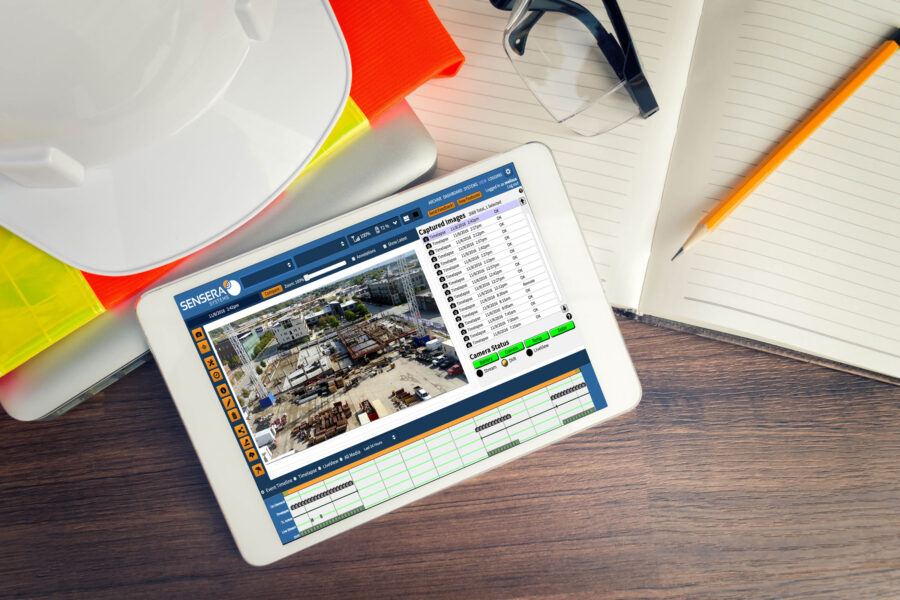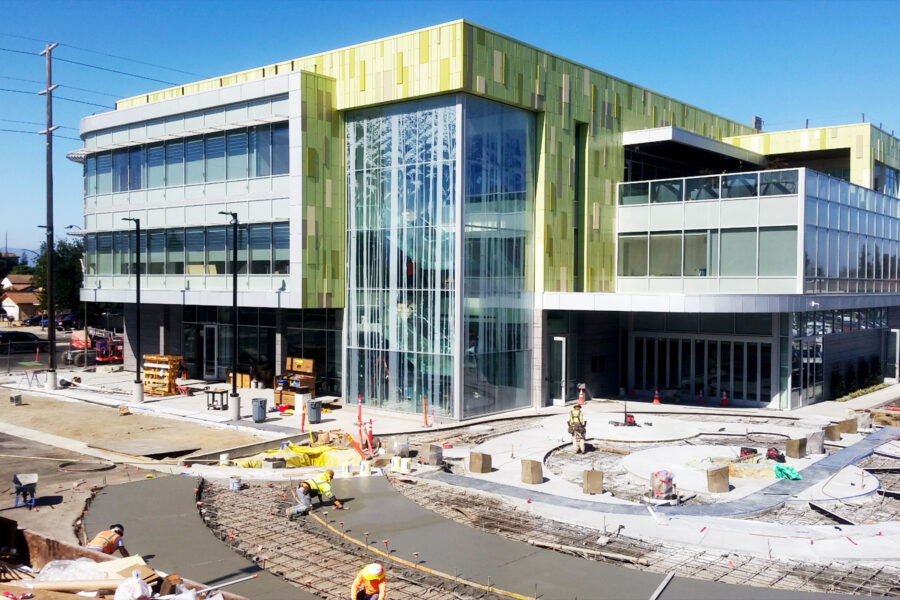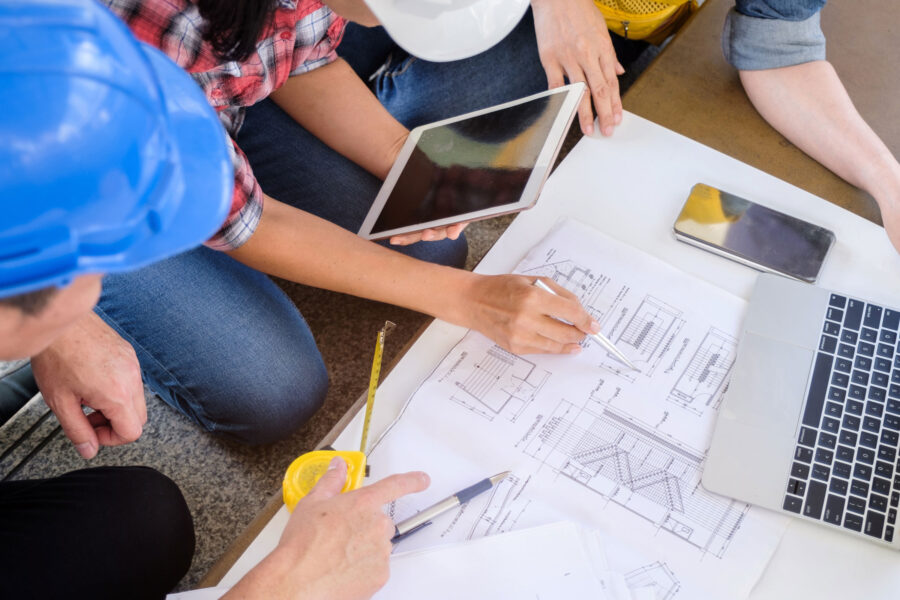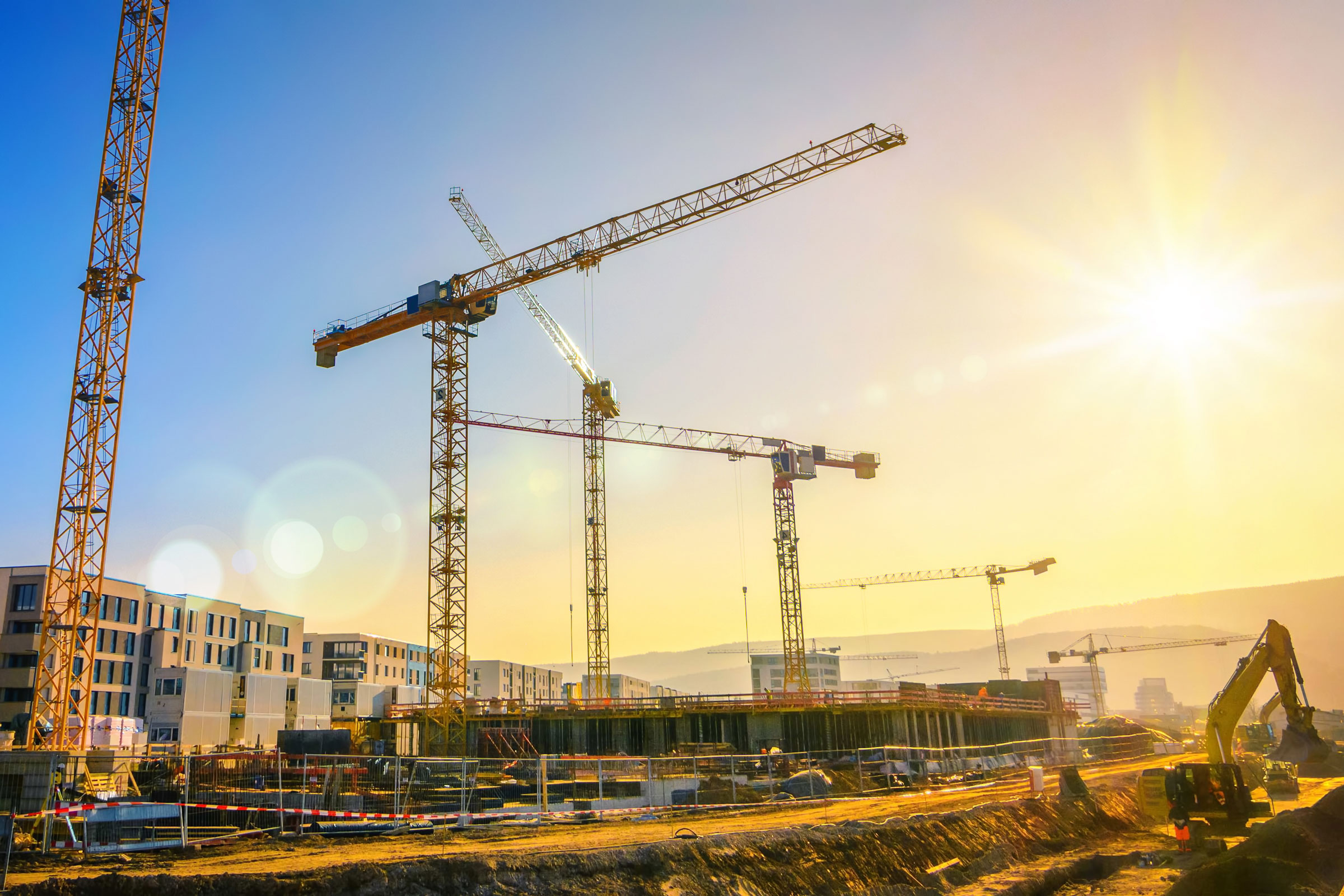Story at a glance:
- Jobsites’ safety and security are just a few reasons why cameras are useful.
- There are many site monitoring methods, but camera technologies have advanced with solar and wireless technologies.
- It’s more than documentation. Camera monitoring enables mid-course correction and overall quality improvement.
On urban constructions sites, very often an advertising banner wraps around the project. It turns an ugly fence into something more interesting, but it also prevents anyone from seeing what’s going on inside the site perimeter.
Many parties have specific reasons for keeping their eyes on a building inside that fencing as it goes up. Theirs is not mere curiosity. It could be developers, lenders, insurers, project managers, security, law enforcement, and even the building marketing team who have a vested interest in seeing how that project is progressing from groundbreaking to occupancy.
Addressing these needs, Sensera Systems provides a suite of solar-powered, LTE wireless video monitoring cameras that use cloud technology to observe and document construction site activity. Employed 24/7, the jobsite cameras deliver higher quality resolution than was typical in earlier generations of video monitors. And because they are wireless, installation and overall costs are less. That makes it practical to use more cameras to literally cover a site from all angles.
The sheer value of construction sites drives much of this. If, for example, the construction costs of a 20-story residential structure is $200 per square foot and each floor is 8,000 square feet, the building will cost approximately $32 million. Next, consider all the parties who have an interest in seeing an on-budget, on-time delivery of the structure. It might take 18 to 36 months, sometimes longer, to complete. It’s easy to see why each stakeholder wants to keep an eye on its progress.
Provide Project Managers with Productivity Updates

Photo courtesy of Sensera Systems
Not all project managers and contractors are able to be onsite during all phases of construction. Some PMs have multiple sites under construction at a given time, making it impossible to be everywhere at once.
But technologies like those at Sensera Systems make it easier to monitor activity and progress, inventories and safety compliance, all in several locations as needed. How do construction companies adapt to these tools? Industry observers have conducted surveys to identify how well adoption of newer technologies are going. The findings are overwhelmingly positive:
- 45% of respondents to KPMG’s 2021 Global Construction Survey said they recently adopted remote monitoring technology, and 50% of contractors said they plan to invest heavily in construction technology in the next year.
- 78% of respondents to the 2021 Tech Report from the Associated Builders and Contractors said they’ve adopted new construction technologies, including 42% who say they use site and progress monitoring solutions.
- 75% of respondents to a 2019 Dodge Commercial Construction Index survey said technologies can improve schedules, and 78% said tech increases productivity.
“Being able to view progress remotely helps project managers to cut their travel schedules, no longer having to go from site to site all the time,” says Rob Garber, CEO of Sensera Systems.
Adding to user utility is how Sensera Systems integrate with Autodesk BIM 360, Procore, and PlanGrid.
Theft Detection and Prevention

Photo courtesy of Sensera Systems
A primary reason for those construction barrier fences is theft prevention (also reducing dust control and noise reduction). But with so much expensive equipment and materials onsite, a simple six-foot fence can’t create a theft-proof environment.
“Construction sites have cameras looking at the jobsite from different points,” Garber says. “Typically that’s at the entry egress, perimeter, and the lay-down yards, where materials are stored.” He describes how Sensera Systems include a 3-in-1 camera that has a thermal sensor/motion detector, which issues an alert to security personnel. It also has a black-and-white camera that observes and records in nighttime conditions, including where there is no lighting at all. The third component is a color video camera, which performs optimally in daylight.
Motion-triggered flood lights, the aforementioned fencing, traditional security cameras in permanent locations, and human security guards are the other means by which security is maintained onsite. Most of these cost more than a Sensera system, which can include professional monitoring to visually verify and notify local law enforcement to when a crime is being committed.
Occupational Safety and Insurance

Photo courtesy of Sensera Systems
The Occupational Safety and Health Administration, OSHA, places strict mandates on such things as proper fall protection, use of safety harnesses and guardrails, proper operation of moving vehicles, and preventive measures around the potential of falling objects. This is to address the high injury and casualty rate in the construction industry, which sees more than 1,000 jobsite deaths nationwide due to accidents every year.
But despite contractors’ best efforts to provide training and safety equipment, human behavior is a variable that introduces more risk. Adding to that is the presence of subcontractors for specialized tasks who might receive incomplete training.
This is concerning to virtually everyone involved in a project. The use of construction site cameras, however, can mitigate the risk. Their simple presence is a reminder to supervisors and workers that risk taking will be noticed. Also, if safety violations are observed, it can prompt a revisit to training procedures or to making adjustments to them. To insurers, camera video can provide the documentation of what happened in an incident; in fact, most insurance companies reduce premiums paid by construction companies when video surveillance is used.
Insurance policies that cover property, product defects, installation errors, general liability, and contractor default (i.e., insuring the performance of subcontractors) all benefit from the presence of onsite camera documentation. Importantly, Sensera cameras also record the time and weather conditions, strengthening the documentation.
Marketers Love to Build Anticipation

Photo courtesy of Sensera Systems
Time-lapse videography is a useful tool for marketing properties, helping build excitement around a project just as sales teams gear up to lease or sell the space. While video footage might be gathered for other purposes (see above), some of this same footage can enliven a website, send a message that emphasizes momentum, and even push the site up in search, as Google and other search engines favor video content.
Future Tech

Photo courtesy of Sensera Systems
Sensera founder David Gaw designed the system to advance beyond unwieldy wired technology—devising the wireless, solar-powered cameras that can be installed even before a construction site has power. Costing as little as 5% of older systems, Sensera technology is nonetheless resilient to theft (GPS tracks its location while the cameras record the thieves). After the building is completed and occupied, those same cameras can be used indefinitely by building owners.

